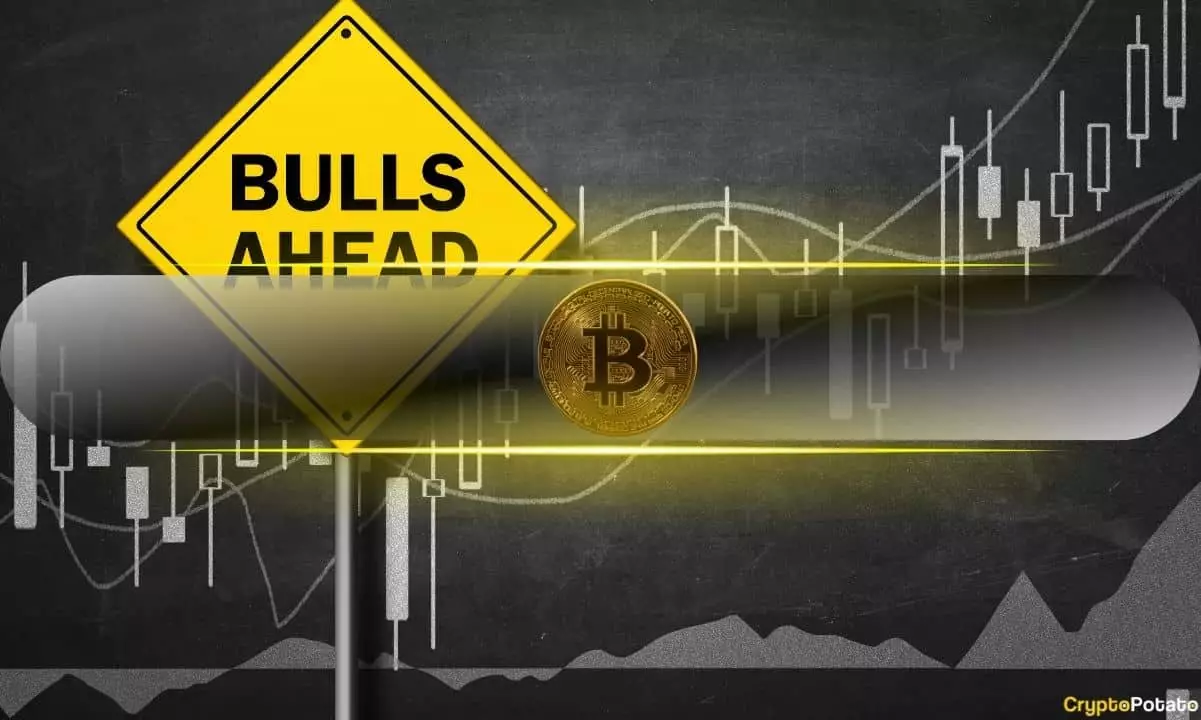Bitcoin’s recent surge, amounting to a remarkable 25% increase from its low of just below $74,000 to over $96,500, signals not just a momentary blip in the crypto landscape, but potentially the onset of a significant market revival. This price bounce has coincided with a noticeable drop in volatility and supply, creating a volatile cocktail of investor excitement and cautious optimism. However, one must question whether this inflation of value reflects a true maturation of Bitcoin as a financial instrument or is merely a repeat of previous patterns characterized by hype and subsequent disillusionment.
Despite the aforementioned increase, there’s an underlying sentiment that these trends might not be as positive as they appear. The allure of a potential bull run hinges on multiple fluctuating variables; miner economics, market manipulations, and the incessantly changing landscape of global liquidity all play a pivotal role. Central to this narrative is the notion advanced by Bitcoin aficionados like Robert Breedlove, who posits that understanding miner break-even costs offers a clearer perspective on market bottom indicators. Historically, when the price of Bitcoin grazes the average cost for miners to sustain their operations, it has often signaled an impending downturn, leading to an increase in price as unprofitable miners exit the market. But, is this perspective too simplistic in an increasingly complex market environment?
The Risky Game of Market Dynamics
Breedlove’s assertions elude the deeper intricacies of the cryptocurrency ecosystem. While it is true that miner survival rates and break-even costs offer insights into broader market dynamics, one must also consider that Bitcoin remains a speculative asset at its core. The narrative of a “supply shock” created by long-term holders accumulating Bitcoin is alluring but ultimately simplistic. Long-term holders can, and often do, sell when conditions become right for them. The recent increase in whale purchases reportedly nearing $4 billion might indicate institutional confidence, yet this could also serve a more traditional capitalist agenda—buy low, sell high—which could very well unsettle the market’s long-term stability.
Moreover, the growing presence of Bitcoin Exchange Traded Funds (ETFs) and institutional products appears to prepare the cryptocurrency market for a broader adoption strategy. However, one must scrutinize whether such products are genuine reflections of trust in Bitcoin’s long-term value or merely another vehicle for profit-making by established financial entities looking to tap into the enthusiasm surrounding cryptocurrencies. The current enthusiasm could create a bubble; one that is susceptible to manipulation, especially given the centralized nature of many of the newer financial products.
A Cautious Approach to the Financial Landscape
The backdrop of global economic changes can certainly influence Bitcoin’s value. The dovish stance taken by central banks and the inflow of liquidity into risk assets may herald a new chapter for cryptocurrencies, as Breedlove asserts. Yet, there’s an important caution to note: the correlation between Bitcoin and macroeconomic conditions is no guarantee of sustained growth.
Liberal economics tells us that unnecessary optimism can often lead to disruptive recessions; a reality Bitcoin enthusiasts would do well to remember. The cyclical nature of financial markets means that unsustainable growth could lead to an equally dramatic downturn. It’s crucial to consider not only the accumulating wealth of Bitcoin but also the avenues through which that wealth is accumulated.
The view that we might be on the cusp of a Bitcoin bull run cannot overshadow the underlying volatility and inherent risks. The position that Bitcoin’s ability to thrive lies amidst dwindling sellers appears as a short-term observation rather than a bastion of long-term confidence. In a world increasingly inclined to analyze digital assets through a lens of immediate gratification, a more tempered viewpoint may be in order.
As we navigate this complex landscape, both optimism and skepticism are needed to ensure a balanced approach. The future of Bitcoin may be brighter than before, but let us not pretend that this journey is devoid of challenges that can derail even the most steadfast believers. The road ahead remains fraught with uncertainty, making critical thought and cautious optimism key to understanding this digital frontier.















